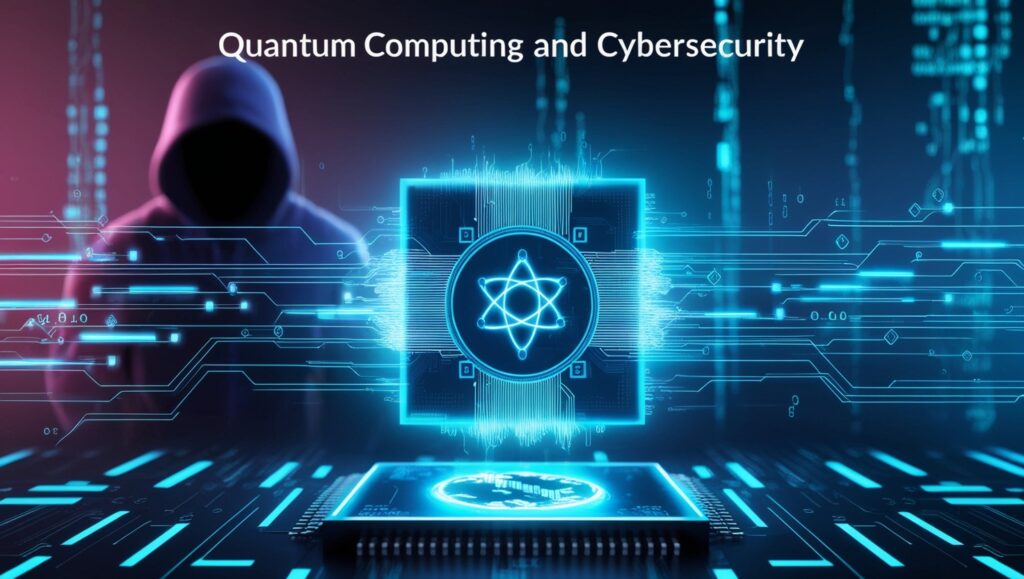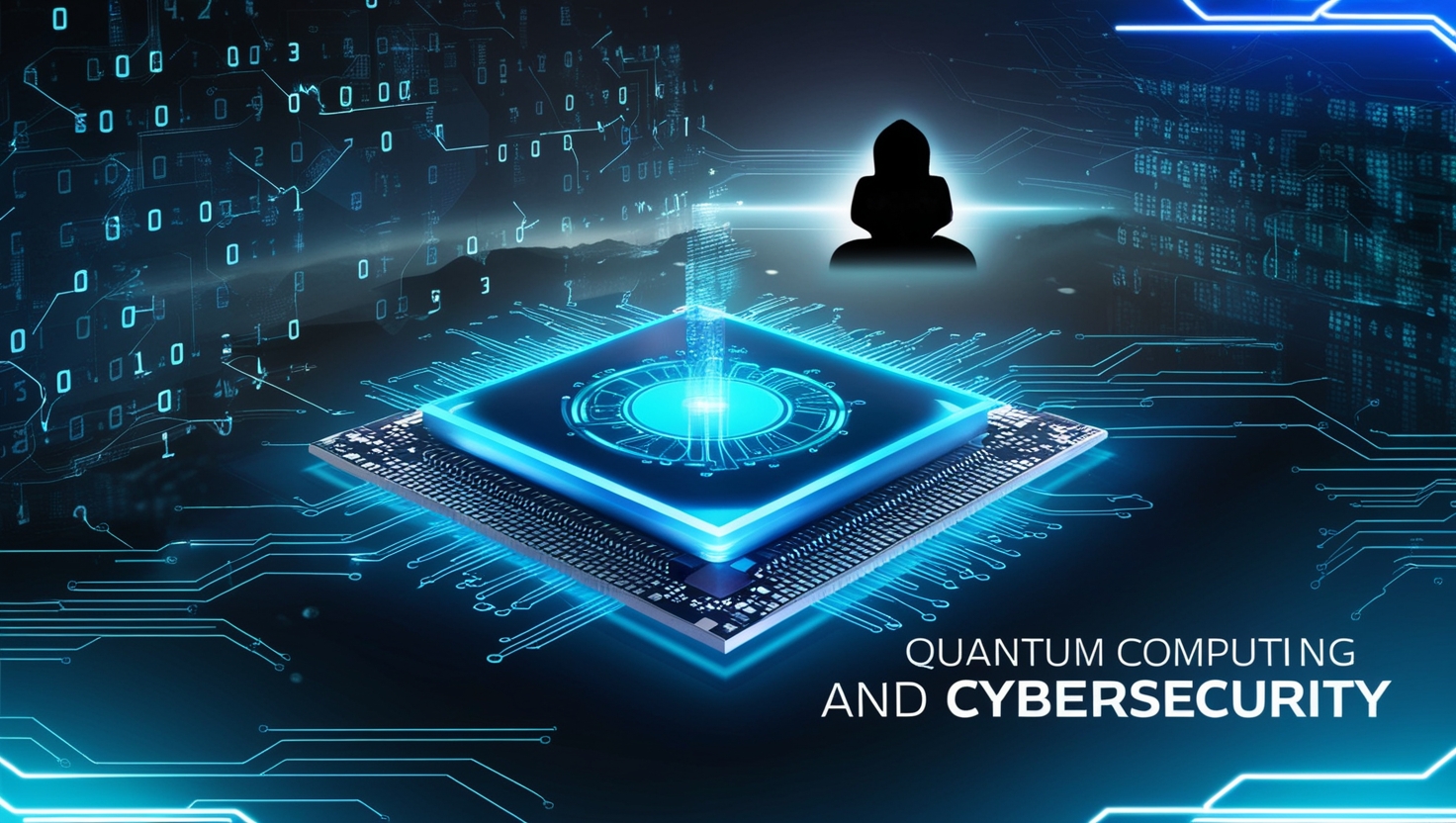1. Introduction: The Intersection of Quantum Computing and Cybersecurity
Quantum computing and cybersecurity are two rapidly evolving fields that are on a collision course. With the advent of quantum computers, the landscape of cybersecurity is set to change dramatically. While quantum computing holds the promise of solving complex problems exponentially faster than classical computers, it also poses significant risks to current encryption standards. This blog explores the impact of quantum computing on cybersecurity and how organizations can prepare for a post-quantum world.

2. What is Quantum Computing? A Brief Overview
Quantum computing is a revolutionary technology that leverages the principles of quantum mechanics to perform computations far beyond the reach of classical computers. Unlike traditional computers that use bits (0s and 1s), quantum computers use qubits, which can exist in multiple states simultaneously due to superposition and entanglement. This allows quantum computers to solve problems that would take classical computers millions of years to crack, making them both a breakthrough and a potential threat to cybersecurity.
3. How Quantum Computing Differs from Classical Computing
Quantum computing differs from classical computing in several key ways:
- Qubits vs. Bits – Traditional computers use bits that are either 0 or 1, while quantum computers use qubits that can be in multiple states at once.
- Superposition – A qubit can represent multiple states simultaneously, enabling massive parallel computation.
- Entanglement – Qubits can be entangled, meaning the state of one qubit is dependent on the state of another, allowing for faster information processing.
- Exponential Speed – Quantum algorithms can solve complex problems much faster than classical algorithms, making them highly powerful but also a cybersecurity threat.
4. The Threat: How Quantum Computers Could Break Current Cryptography
One of the biggest concerns in cybersecurity is that quantum computers could render current encryption methods obsolete. Most modern encryption relies on complex mathematical problems that classical computers cannot solve within a reasonable time. However, quantum computers can solve these problems almost instantly. For example:
- RSA Encryption – Quantum computers can use Shor’s Algorithm to factorize large numbers, breaking RSA encryption, which is widely used for secure communications.
- Elliptic Curve Cryptography (ECC) – Another widely used encryption method that quantum computers could easily break.
- Public Key Infrastructure (PKI) – The backbone of secure internet communications could be compromised by quantum attacks.
5. Quantum-Safe Cryptography: Preparing for a Post-Quantum World
As the threat of quantum computing looms, researchers and cybersecurity experts are working on quantum-safe cryptography. This involves developing encryption methods that quantum computers cannot break. Some approaches include:
- Post-Quantum Cryptography (PQC) – Developing classical algorithms that are resistant to quantum attacks.
- Quantum Key Distribution (QKD) – Using quantum mechanics to create encryption keys that are impossible to intercept without detection.
- Hybrid Encryption – Combining classical and quantum-resistant encryption to create more secure systems.
6. Shor’s Algorithm and the End of RSA Encryption?
Shor’s Algorithm is a quantum algorithm that can efficiently factorize large numbers, which is the foundation of RSA encryption. This means that when sufficiently powerful quantum computers become available, they could decrypt sensitive information secured by RSA encryption in seconds. This poses a serious risk to data security, making the transition to quantum-resistant cryptography imperative.
7. Post-Quantum Cryptography: The Race for Secure Encryption
Governments, tech giants, and cybersecurity experts are in a race to develop post-quantum cryptographic algorithms before quantum computers become powerful enough to break existing encryption. Organizations like NIST (National Institute of Standards and Technology) are working on standardizing post-quantum cryptographic algorithms to ensure digital security in the quantum era.
8. Quantum Key Distribution (QKD): The Future of Secure Communications
Quantum Key Distribution (QKD) is an advanced encryption method that leverages the principles of quantum mechanics to create ultra-secure communication channels. Unlike classical encryption, QKD ensures that any attempt to intercept communication is immediately detected, making it virtually impossible to hack.
9. Challenges in Implementing Quantum-Secure Solutions
While quantum-safe cryptography offers a promising future, there are several challenges in its implementation:
- Hardware Limitations – Quantum computers are still in their early stages and require significant advancements to be fully operational.
- Cost of Transition – Moving to quantum-resistant cryptography will require substantial investment in infrastructure and resources.
- Compatibility Issues – Existing systems and applications will need major upgrades to support quantum-safe encryption methods.
- Lack of Standardization – The industry is still working on setting universal standards for post-quantum cryptography.
10. How Governments and Organizations Are Preparing for the Quantum Threat
Governments and major tech companies are already taking steps to prepare for the quantum threat:
- NIST’s Post-Quantum Cryptography Initiative – Developing standardized quantum-resistant encryption.
- Quantum Research Investments – Companies like Google, IBM, and Microsoft are investing heavily in quantum computing research and security solutions.
- Cybersecurity Regulations – Governments are enforcing stricter cybersecurity policies to ensure organizations transition to quantum-safe encryption.
11. Conclusion: The Future of Cybersecurity in the Quantum Era
Quantum computing and cybersecurity are at a crucial turning point. While quantum computing offers revolutionary advancements, it also poses serious risks to digital security. Organizations must start preparing for a post-quantum world by adopting quantum-safe cryptographic solutions. The future of cybersecurity depends on proactive measures to stay ahead of quantum threats.
12. FAQ
1. What is quantum computing’s impact on cybersecurity?
Quantum computing poses a significant threat to current encryption standards, potentially rendering them obsolete. However, it also offers new opportunities for ultra-secure encryption methods like Quantum Key Distribution (QKD).
2. How soon will quantum computers break current encryption?
While full-scale quantum computers are not yet available, experts estimate that within the next 10-20 years, they could be powerful enough to break RSA and ECC encryption.
3. What is post-quantum cryptography?
Post-quantum cryptography refers to encryption algorithms designed to be secure against quantum computing attacks.
4. How can organizations prepare for quantum threats?
Organizations should start adopting quantum-resistant encryption, stay updated with cybersecurity regulations, and invest in research and development for secure communication methods.

Leave a Reply